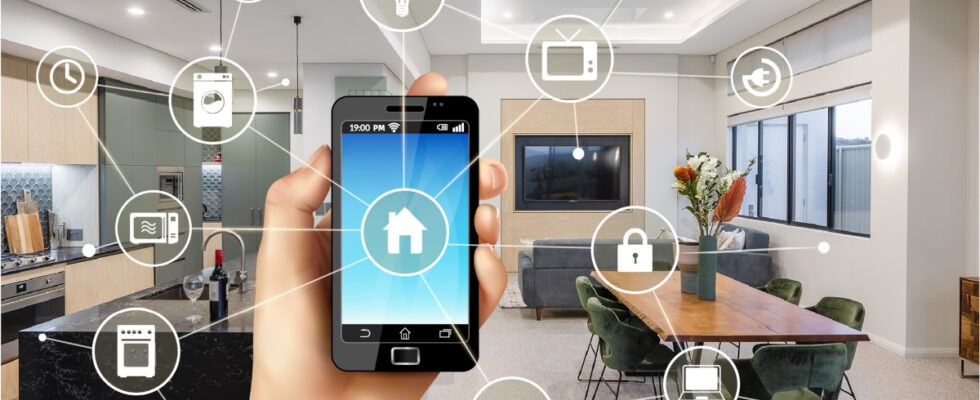In the rapidly evolving landscape of technology, smart home gadgets have emerged as the cornerstone of the modern living experience. These devices, equipped with cutting-edge features and connectivity, have transformed traditional homes into intelligent, efficient, and interconnected spaces.
The adoption of smart home gadgets represents a paradigm shift in the way we perceive and interact with our living environments. This essay delves into the various aspects of adopting smart home gadgets, exploring their impact on convenience, security, energy efficiency, and the overall quality of life.
Convenience and Connectivity
One of the primary reasons behind the surge in smart home gadget adoption is the unparalleled convenience they bring to daily life. Smart speakers, such as Amazon Echo and Google Home, have become virtual assistants, seamlessly integrating with other devices to streamline tasks.
Voice commands enable users to control lights, thermostats, and even kitchen appliances, making mundane activities more efficient and enjoyable. The interconnectedness of these gadgets fosters an environment where devices work in harmony, responding to user preferences and adapting to daily routines.
Security Reinvented
Smart home security systems have redefined the concept of home protection. From smart locks and video doorbells to motion sensors and surveillance cameras, homeowners now have unprecedented control and visibility over their living spaces.
The ability to monitor and manage security remotely through mobile applications enhances peace of mind, providing real-time updates and alerts. The integration of artificial intelligence in these systems further refines their capabilities, distinguishing between regular activities and potential threats, reducing false alarms, and enhancing overall security.
Energy Efficiency and Sustainability
The adoption of smart home gadgets also contributes significantly to energy efficiency and sustainability. Smart thermostats, for example, learn user preferences and adjust temperatures accordingly, optimizing energy consumption.
Lighting systems equipped with motion sensors and programmable settings ensure lights are only active when needed, reducing electricity wastage. Homeowners can track and manage energy usage through smart meters, fostering a conscious and sustainable approach to resource consumption. The long-term impact of these energy-efficient practices not only benefits the environment but also translates into cost savings for the users.
Enhanced Entertainment and Connectivity
Smart home gadgets have revolutionized the entertainment experience within homes. Smart TVs, sound systems, and gaming consoles seamlessly integrate with online streaming services and other devices, offering a personalized and immersive entertainment environment.
The ability to control these devices through a centralized hub or smartphone enhances user experience, eliminating the need for multiple remote controls and simplifying the overall entertainment setup. Additionally, the integration of voice commands and artificial intelligence in entertainment systems opens up new possibilities for intuitive and interactive experiences.
Challenges and Considerations
While the adoption of smart home gadgets brings numerous benefits, it also raises concerns and challenges. Privacy and data security are critical considerations, as these devices often collect and transmit sensitive information.
Homeowners must be vigilant in configuring and updating security settings to protect against potential breaches. Compatibility issues and interoperability between different brands and ecosystems can also pose challenges, requiring users to carefully select devices that work seamlessly together.
The landscape of smart home technology continues to evolve, with ongoing innovations and emerging trends shaping the future of connected living. The integration of artificial intelligence and machine learning is expected to enhance the predictive capabilities of smart home gadgets, anticipating user needs and preferences.
The advent of 5G connectivity will further optimize device communication, reducing latency and enhancing the overall performance of smart home ecosystems. As technology continues to advance, the possibilities for smart home innovations are limitless, promising a future where homes are not just smart but also adaptive and intuitive.
Adoption of Smart Home Gadgets
The adoption of smart home gadgets represents a transformative shift in the way we experience and interact with our living spaces. From enhancing convenience and security to promoting energy efficiency and sustainability, these devices have become integral to modern living.
As technology continues to advance, the future holds exciting possibilities for even more sophisticated and interconnected smart home ecosystems. However, as we embrace this technological revolution, it is crucial to address privacy concerns, security issues, and compatibility challenges to ensure a seamless and secure integration of smart home gadgets into our daily lives. Ultimately, the journey towards smart homes is not just a technological evolution but a step towards a more efficient, secure, and sustainable future.


